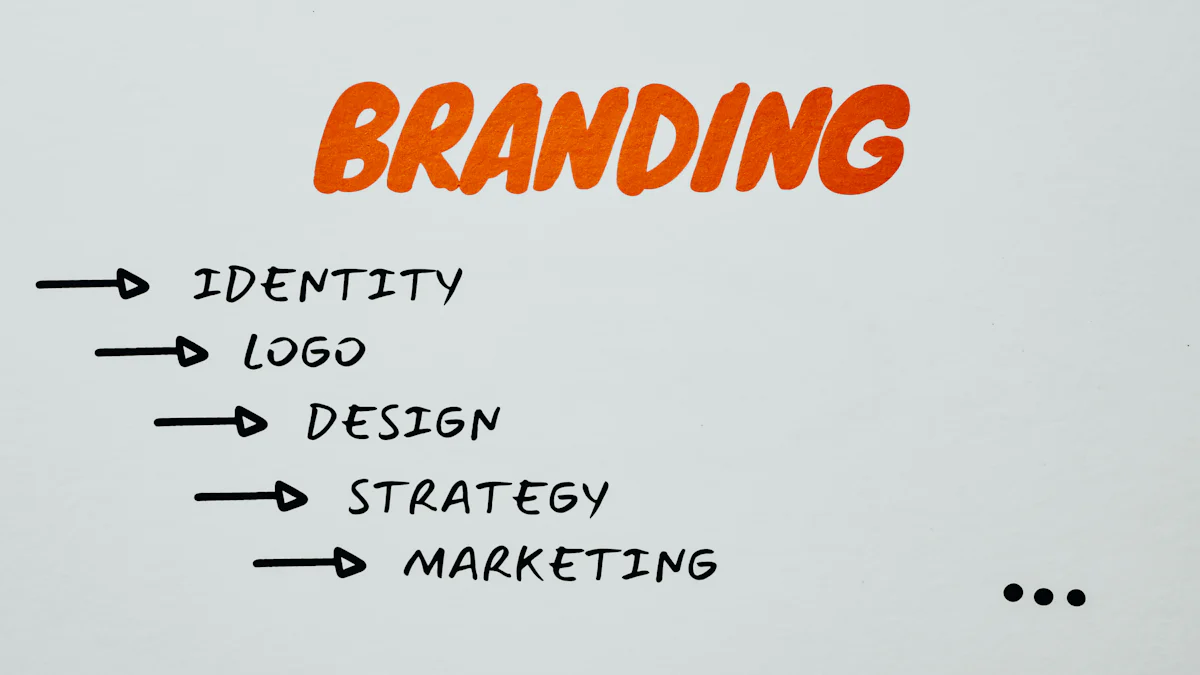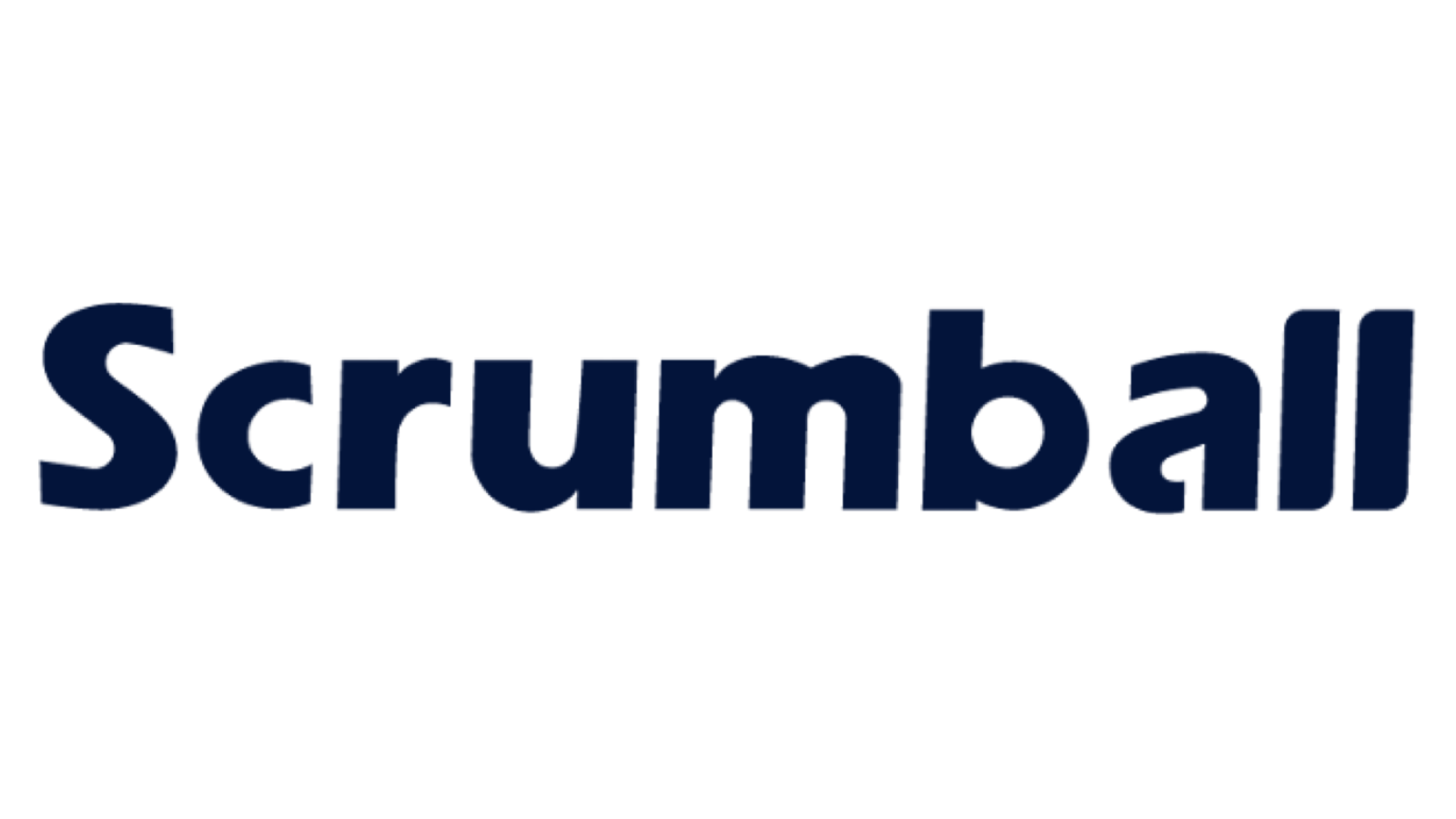Top 20 Marketing Automation Tools for 2025

Imagine having a tool that handles repetitive tasks while you focus on growing your business. That’s the power of marketing automation tools in 2025. These tools are no longer optional—they’re essential. With 75% of companies already using them, it’s clear they’re transforming digital marketing. Whether it’s nurturing leads or managing data, automation simplifies your workflow and boosts productivity.
Businesses using marketing automation solutions report better campaign performance and faster response times. Automated marketing campaigns also help you engage customers across multiple platforms seamlessly. As AI and omnichannel strategies evolve, these tools will only become more indispensable.
What Are Marketing Automation Tools?
Definition of Marketing Automation Tools
You’ve probably heard the term “marketing automation tools” thrown around a lot, but what does it really mean? Simply put, these tools are software designed to take over repetitive marketing tasks. Think about scheduling social media posts, sending out email campaigns, or even tracking website traffic—these are all things marketing automation tools can handle for you.
At their core, these tools help you capture new customers, improve your marketing efficiency, and analyze how your campaigns are performing. They’re like having an extra set of hands (or maybe even a whole team) to manage your digital marketing efforts. Whether it’s automating email sequences or creating personalized customer experiences, marketing automation platforms make your life easier and your campaigns more effective.
Key Benefits of Marketing Automation
Time-saving and efficiency
Let’s face it—managing marketing tasks manually can eat up your time. Marketing automation solutions streamline your workflows, so you can focus on the bigger picture. By automating repetitive tasks, you’ll save hours every week. For example, instead of manually sending follow-up emails, you can set up an automated sequence that does it for you. This means more time for creative projects and strategic planning.
Improved customer engagement
Ever wonder how some brands seem to know exactly what you want? That’s the magic of customer journey automation tools. These tools use data to segment your audience and send personalized messages. The result? Your customers feel like you’re speaking directly to them, which boosts engagement and loyalty.
Enhanced data-driven decision-making
Marketing automation software doesn’t just save time—it also gives you insights. With detailed analytics, you can track campaign performance, understand customer behavior, and make smarter decisions. For instance, you’ll know which email subject lines get the most clicks or which social media posts drive traffic. This data helps you optimize your strategies and maximize ROI.
Scalability for growing businesses
As your business grows, so do your marketing needs. That’s where automated marketing platforms shine. They’re built to scale with you, whether you’re a small startup or a large enterprise. Need to handle thousands of leads? No problem. These tools grow alongside your business, ensuring you’re always ready to meet demand.
How to Choose the Right Marketing Automation Solution
Key Factors to Consider
Features and functionality
When choosing a marketing automation solution, you need to focus on the features that align with your goals. Look for tools that offer lead scoring to help prioritize prospects or predictive analytics to anticipate customer behavior. CRM integration is another must-have, as it syncs data with platforms like Salesforce or HubSpot for smoother follow-ups. If you’re in e-commerce, automation features like personalized offers and timely reminders can make a big difference. The right features will ensure your campaigns are both effective and efficient.
Integration with existing tools
Your marketing automation software should work seamlessly with your current tech stack. Whether it’s your CRM, email platform, or analytics tools, integration is key to avoiding data silos. For example, syncing customer journey automation tools with your existing systems ensures smooth data transfer and better customer engagement. A platform that doesn’t integrate well can slow you down and create unnecessary headaches.
Scalability and flexibility
As your business grows, your marketing needs will evolve. Choose a solution that scales with you. Whether you’re handling hundreds or thousands of leads, the platform should adapt without compromising performance. Flexibility is equally important. You want a tool that can adjust to new strategies or channels as your business expands.
Pricing and budget
Budget is always a concern, especially for small businesses. Be aware of hidden costs like extra fees for advanced features or additional users. Free trials can help you test the waters before committing. Remember, the cheapest option isn’t always the best. Balance cost with the value the tool brings to your business.
Tip: Look for vendors that offer comprehensive training and support. A user-friendly platform with good vendor support can save you time and frustration.
Identifying Your Business Needs
Small businesses vs. enterprises
Small businesses often face challenges like limited budgets and technical expertise. High costs for AI-powered features can be hard to justify. Enterprises, on the other hand, have more resources but may struggle with internal resistance or complex processes. Here’s a quick comparison:
| Challenge | Small Businesses | Enterprises |
|---|---|---|
| Cost Constraints | High costs of AI tools can be prohibitive. | More resources to manage costs. |
| Technical Expertise | Limited time and training to learn complex tools. | More skilled personnel available. |
| Data Requirements | Need extensive data sets for effective AI use. | Typically have larger data sets. |
| Internal Resistance | Teams may resist due to fear of job loss. | More established processes. |
| Measuring ROI | Difficult to track impact on revenue. | More robust tracking systems. |
Industry-specific requirements
Your industry plays a big role in determining the right tool. For example, e-commerce businesses might prioritize features like abandoned cart reminders, while B2B companies may need advanced lead nurturing capabilities. Think about what’s unique to your industry and choose a solution that meets those needs.
Team size and technical expertise
The size and skill level of your team matter too. If your team lacks technical expertise, go for a user-friendly platform with strong vendor support. Larger teams with skilled personnel can handle more complex tools. Evaluate your team’s capabilities before making a decision.
Note: Map out your current marketing workflows and identify areas for improvement. This will help you choose a tool that enhances your efforts without overcomplicating things.
Top 20 Marketing Automation Tools for 2025

All-in-One Marketing Platforms
Tool 1: HubSpot
HubSpot is one of the most popular marketing automation platforms out there. It’s perfect if you’re looking for an all-in-one solution to manage campaigns across multiple channels. You can handle everything from email marketing to social media scheduling in one place. HubSpot also excels in lead generation and nurturing, thanks to its built-in tools. Its unified interface makes campaign management a breeze, even for beginners. Plus, you’ll love its straightforward reporting tools that help you track performance without any hassle.
Tool 2: Salesforce Marketing Cloud
Salesforce Marketing Cloud is another powerhouse among automated marketing platforms. It’s ideal for businesses that prioritize mobile messaging and customer engagement. While it may require some technical expertise for setup, its advanced features like predictive analytics and AI-driven insights make it worth the effort. Salesforce also integrates seamlessly with other tools, ensuring a unified customer view. However, keep in mind that some features may come with additional costs.
Tool 3: Adobe Marketo Engage
Adobe Marketo Engage is a favorite among marketing automation software companies for its robust capabilities. It’s particularly effective for lead qualification and client engagement. Businesses often use it to automate campaigns and deliver curated content to their audience. Marketo’s ability to integrate with other systems makes it a versatile choice. Whether you’re running a small campaign or a large-scale operation, this platform adapts to your needs.
Email Marketing Automation Tools
Tool 4: ActiveCampaign
ActiveCampaign stands out for its ability to create complex workflows based on customer interactions. It’s not just about email marketing automation—it also supports SMS and social media, making it a versatile tool. You’ll appreciate how it simplifies repetitive tasks, freeing up time for strategic planning. Its detailed analytics ensure you can measure ROI and optimize campaigns effectively.
Tool 5: Brevo
Brevo is a user-friendly option for small and medium-sized businesses. It offers essential features like an email builder, automation, and even SMS marketing. Its free plan is generous, allowing you to send up to 300 emails daily. While it lacks advanced CRM functionality, its simplicity and affordability make it a great starting point for businesses new to email marketing automation tools.
Tool 6: GetResponse
GetResponse is a go-to for e-commerce businesses and solopreneurs. It offers a customizable dashboard and excellent email marketing tools, including autoresponders. Its scalability makes it a solid choice for growing businesses. Whether you’re sending newsletters or running automated campaigns, GetResponse has you covered.
Social Media Marketing Automation Tools
Tool 7: Hootsuite
Hootsuite is a lifesaver for managing multiple social media accounts. It supports over 35 platforms, allowing you to schedule posts, track metrics, and monitor brand conversations—all from one dashboard. You’ll also benefit from its analytics, which suggest the best times to post for maximum engagement.
Tool 8: Buffer
Buffer simplifies social media management with its intuitive interface. It’s perfect for scheduling, publishing, and analyzing content across platforms. Its flexible pricing plans make it accessible for businesses of all sizes. Plus, multiple users can collaborate on managing up to 25 accounts, making it a great choice for teams.
Tool 9: Sprout Social
Sprout Social combines social media management with customer care. It offers tools for publishing, scheduling, and reporting, streamlining your daily tasks. You can also use its chatbot features to enhance customer interactions. Its comprehensive analytics provide valuable insights into audience engagement, helping you refine your strategy.
Customer Relationship Management (CRM) Tools
Tool 10: Salesforce Pardot
Salesforce Pardot is a powerhouse for B2B marketing automation. It simplifies your workflow with features like activity dashboards, campaign management, and email tracking. You can manage leads more effectively and track engagement across multiple touchpoints. Its email marketing tools allow you to create personalized campaigns that resonate with your audience. If you’re looking for a tool to streamline your customer relationship management, Pardot is a solid choice.
Tool 11: Zoho CRM
Zoho CRM is perfect for businesses seeking a balance between affordability and functionality. It offers targeted campaigns, automated email marketing, and engagement tracking. You’ll love its intuitive interface, which makes it easy to manage leads and track customer interactions. Zoho CRM also integrates seamlessly with other marketing automation platforms, ensuring your data stays connected.
Tool 12: Pipedrive
Pipedrive is a user-friendly CRM tool designed to keep your sales pipeline organized. It integrates with apps like Zapier, Slack, and Zoom, making it easy to connect with your existing tools. You can automate workflows, track leads, and even schedule follow-ups. Its API allows for custom integrations, giving you the flexibility to tailor it to your needs.
Lead Generation and Nurturing Tools
Tool 13: Klaviyo
Klaviyo specializes in email and SMS marketing, making it a favorite for e-commerce businesses. It automates lead capture and nurturing, helping you create personalized marketing experiences. You can set up targeted email campaigns based on customer behavior, ensuring your messages hit the mark every time.
Tool 14: Customer.io
Customer.io helps you capture and nurture leads with ease. You can use popups on your website to gather visitor information and then automate email campaigns to keep them engaged. Its CRM integration streamlines lead management, making it easier to track and convert prospects.
Tool 15: OptinMonster
OptinMonster is all about high-converting email popups and targeted campaigns. It’s ideal for capturing leads and driving conversions. You can create custom popups that align with your brand and use them to gather valuable customer data. This tool is a must-have for businesses looking to boost their lead generation efforts.
Analytics and Reporting Tools
Tool 16: Google Analytics 4
Google Analytics 4 gives you a deeper understanding of user behavior. It tracks content performance, user experience, and device functionality. With AI-driven insights and advanced tracking, you can optimize your marketing strategies for better ROI.
Tool 17: Tableau
Tableau simplifies complex data with its interactive dashboards. You can visualize your marketing performance and collaborate with your team to refine strategies. Its real-time tracking ensures you stay on top of your campaigns, making it one of the best marketing automation software options for data visualization.
Tool 18: Databox
Databox centralizes your data from over 100 integrations, providing a clear view of your KPIs. Its drag-and-drop dashboards and automated reporting make it easy to monitor performance. You can set goals, track progress, and receive alerts, ensuring your team stays proactive.
Specialized Marketing Automation Tools
Tool 19: Omnisend
If you run an e-commerce store, Omnisend might just become your best friend. This tool is built to help you connect with your customers across multiple channels like email, SMS, and even push notifications. It’s like having a personal assistant that ensures your messages reach the right people at the right time.
One of Omnisend’s standout features is its pre-built workflows. These workflows are customizable, so you can tailor them to match your brand’s voice and goals. For example, you can set up an automated sequence to welcome new subscribers or re-engage customers who abandoned their carts. The best part? You don’t need to be a tech wizard to make it work. Omnisend simplifies the process, letting you focus on creating meaningful connections with your audience.
This tool also excels at personalizing communication based on customer behavior. Whether someone browses your website or clicks on a product link, Omnisend ensures your follow-up feels natural and relevant. It’s a powerful way to boost engagement and drive sales without adding extra work to your plate.
Tool 20: Zapier
Zapier is like the glue that holds your marketing automation platforms together. It’s perfect for connecting tools that don’t have native integrations. Imagine linking your CRM, customer service software, and CMS seamlessly. Zapier makes it happen, allowing you to automate workflows and save hours of manual effort.
With Zapier, you can streamline lead management by automatically classifying and routing prospects. It also helps you clean up messy data, ensuring your records stay accurate. Need to segment your subscribers? Zapier’s automation ensures the right message reaches the right audience, improving engagement.
This tool isn’t just about data. It can track brand mentions, curate content ideas, and even log social media posts for performance analysis. Whether you’re managing email marketing automation tools or social media automation tools, Zapier keeps everything running smoothly. It’s a must-have for marketers looking to simplify their workflows and maximize efficiency.
Pro Tip: Start small with Zapier. Automate one or two tasks first, then expand as you get comfortable. You’ll be amazed at how much time you save!
Marketing automation tools have become essential for businesses in 2025. They save you time, improve efficiency, and help you connect with your audience on a deeper level. Whether you're a small business or a large enterprise, these tools simplify your workflows and scale with your growth.
From all-in-one platforms like HubSpot to specialized tools like Zapier, each solution offers unique strengths. Some focus on email campaigns, while others excel at social media or analytics. The key is finding the one that fits your goals and team.
Start by identifying your needs. Do you need a simple tool or something more advanced? Test a few options, and don’t forget to consider integration and scalability. The right tool will make your marketing efforts smoother and more impactful.
FAQ
What is the best marketing automation tool for small businesses?
The best tool depends on your needs, but Brevo and Zoho CRM are great for small businesses. They’re affordable, easy to use, and offer essential features like email automation and lead tracking. Start with their free trials to see if they fit your workflow.
Can I integrate marketing automation tools with my existing software?
Yes, most tools offer integrations. For example, Zapier connects apps seamlessly, while platforms like HubSpot and Salesforce integrate with CRMs, email tools, and analytics software. Check the integration options before choosing a tool to ensure compatibility with your current setup.
Are marketing automation tools expensive?
Not always! Many tools, like GetResponse and Buffer, offer affordable plans or free versions. Pricing varies based on features and user limits. Start with a free trial or basic plan, then upgrade as your business grows. Always balance cost with the value the tool provides.
Do I need technical skills to use marketing automation tools?
Not necessarily. Tools like ActiveCampaign and Omnisend are user-friendly and designed for beginners. They offer drag-and-drop interfaces and pre-built workflows. If you’re new to automation, choose a tool with strong customer support and tutorials to help you get started.
How do I measure the success of my marketing automation campaigns?
Use built-in analytics to track metrics like open rates, click-through rates, and conversions. Tools like Google Analytics 4 and Databox provide detailed insights. Set clear goals for each campaign and compare results to your benchmarks to evaluate performance.
Tip: Regularly review your data to refine your strategies and improve ROI.
See Also
15 Essential Influencer Marketing Platforms for 2024
20 Key Influencer Marketing Statistics Every Marketer Should Know
10 Budget-Friendly Influencer Marketing Platforms for 2024
Practical Influencer Marketing Data for Effective Strategies
